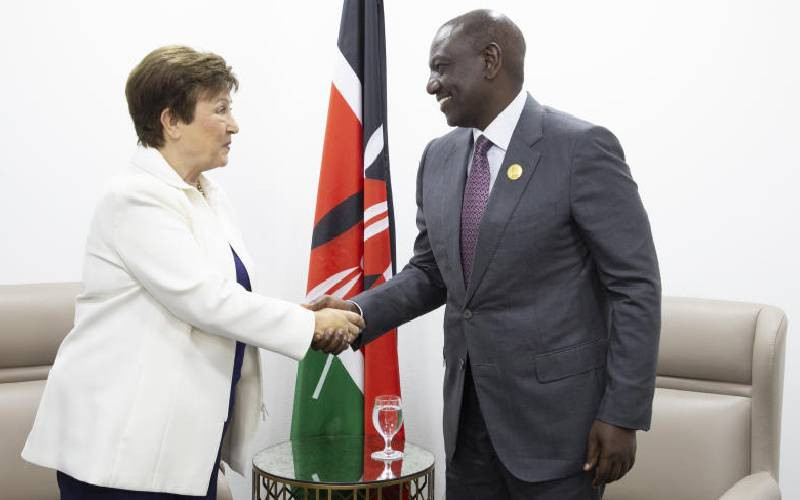Lake Kenyatta is facing a myriad of challenges with the influx of large population of livestock top among them.
When you approach Lake Kenyatta in Mpeketoni Lamu County one of the things that attract you is a large number of cattle grazing around the diminishing Lake while others are quenching their thirst.
A first timer would be excused for assuming that all Mpeketoni community members are pastoralists.
One struggles to locate where the water in the Lake is below the sea of cattle and goats that have surrounded the Lake and are all competing for this resource that was once Lake Kenyatta but is slowly but surely on its last legs and looks like a water in a basin.
The young men herding the cattle are in the farthest corner looking concerned as the cattle drink the last waters of the Lake seemingly concerned that if rains don’t come anytime soon they may have to come with solutions very fast on where they will get water for their animals.
The cattle are aloof though and after drinking water, a number of them defecating in the water either to mark territory or to dare whoever is watching that the water may not be very safe after all.
Every time whenever there is a drought which has been regular in the past, the pastoralists move their herds from Garissa, Tana River and sometimes as far as Wajir counties to come and look for pasture and water in Lamu County with some of them heading to Dodori and Awer areas.
The rest remain in Lamu West striding between Amu Ranch through Lake Kenyatta all the way to Kipini provisional forest.
In the past, this would be for a short season before the pastoralists start the journey back home once it starts raining and there is water and pasture where they come from.
From 2009 this has changed as now the pastoralists come with their herds and settle around the Lake and the ecosystem as the area back home has been experiencing longer drought seasons and the pastoralists fear going back.
They have decided to settle here and new structures are being erected every day in Koreni, Pangani, and Lumsi along the water catchment corridor.
As the makeshift villages along the water catchment area continue so does the water levels continue going down as there is destruction along the way and some of the newly created farms block the channel that brings water to the lake when it rains.
The cattle owners also have to use veterinary medicine to take care of the cattle and sometimes when this is not disposed of well end up polluting the Lake. The cattle also cause siltation along the Lake when they come to drink water.
Since last year, the situation became worse and the drought was more severe and the numbers of cattle from Garissa and Tana River counties increased.
Some estimates put the current population of that cattle around the Lake as being over 100 000 and with experts averring that one cow drinks 8 liters a day this then mean that the 100 000 cattle plus consume over 800 000 liters of water every day!
If this is added together with the fact that human beings and wild animals also need the ever dwindling water, the situation becomes grimmer and everybody is getting concerned on whether the ecosystem can withstand this pressure brought by human beings domestic animals and wild animals.
The livestock also competes with the wild animals for water, pasture, and habitat which in return end up displacing the wild animals which then move towards people’s farms and thus increasing human-wildlife.
The impact is not just restricted to the basin but is all the way to the Kipini conservancy which used to be in private hands but due to challenges in management was handed over to Kenya Forest Service to manage for some time before returning back to the owner to take over.
There have been stories that the cattle are left in Kipini conservancy by the herders who then take cover and when KFS officers come to arrest them for encroachment find nobody.
There is a time some officers tried keeping an eye over the livestock the whole day hoping to capture their owners in the evening when they are coming for their cattle only to see the cattle going home on their own with the herders, not on sight.
That’s when even KFS officers realised that the cattle not only knew home but that tending the cattle hoping to capture the owners only ended up taking their time that they would have used elsewhere as the cows knew home.
The Save Lake Kenyatta initiative is calling for action to address this challenge to the Lake. While they agree that the water situation is at crisis levels, they nonetheless agree that the herders and their cattle can’t be told to go back now as the effect of drought is everywhere and that may not work.
They are requesting the County Government together with other stakeholders to come up with a grazing law that will regulate where to graze and the penalties of encroaching into a vital resource like the Lake.
WWF is working together with the County Government and the Lake Kenyatta initiative to see that the dire situation of the Lake is addressed.
One of the solutions is the ongoing Spatial planning which is almost complete and has proposals on the best land use system for the area i.e. conservation with controlled exploitation in terms of water extraction and usage.
The community in Mpeketoni lives in hope that once the rain comes some of these pastoralists will go back.
In the meantime the Lake continues to shrink, human-wildlife conflicts are going up, wildlife is dying, the water is becoming saline and domestic animals are becoming thinner. Let’s all join hands and #SaveLakeKenyatta
 The Standard Group Plc is a
multi-media organization with investments in media platforms spanning newspaper
print operations, television, radio broadcasting, digital and online services. The
Standard Group is recognized as a leading multi-media house in Kenya with a key
influence in matters of national and international interest.
The Standard Group Plc is a
multi-media organization with investments in media platforms spanning newspaper
print operations, television, radio broadcasting, digital and online services. The
Standard Group is recognized as a leading multi-media house in Kenya with a key
influence in matters of national and international interest.
 The Standard Group Plc is a
multi-media organization with investments in media platforms spanning newspaper
print operations, television, radio broadcasting, digital and online services. The
Standard Group is recognized as a leading multi-media house in Kenya with a key
influence in matters of national and international interest.
The Standard Group Plc is a
multi-media organization with investments in media platforms spanning newspaper
print operations, television, radio broadcasting, digital and online services. The
Standard Group is recognized as a leading multi-media house in Kenya with a key
influence in matters of national and international interest.





